Swimming with Whale Sharks in Isla Holbox | Is It Sustainable?
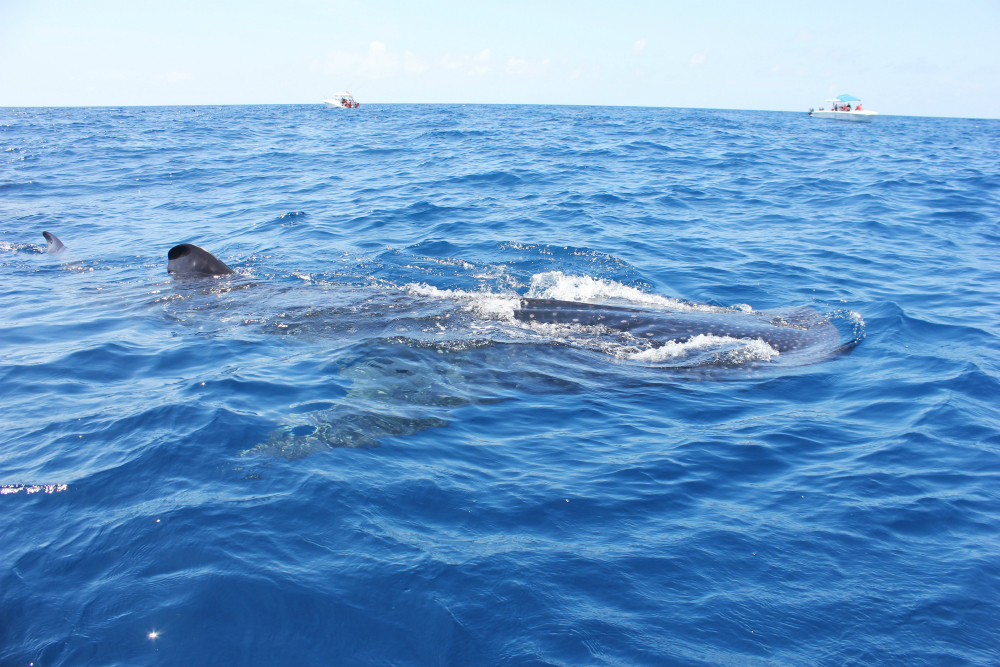
Swimming with whale sharks in Isla Holbox was the most incredible but intimidating experience. You can’t even begin to imagine just what jumping into the water with the world’s biggest fish will feel like until you get there.
Ask me five years ago and I would’ve told you there was absolutely no way I would be getting in the water anywhere near a shark – no matter what kind of shark. Fast-forward to now, I had my feet in flippers dangling over the edge of a boat above a pod of huge whale sharks.
Swimming with whale sharks in Mexico was an experience like no other. But don’t forget that wildlife tourism needs to be responsible and sustainable. Here’s my experience of swimming with whale sharks in Isla Holbox, sustainable whale shark tourism and advice on how to swim with whale sharks responsibly.
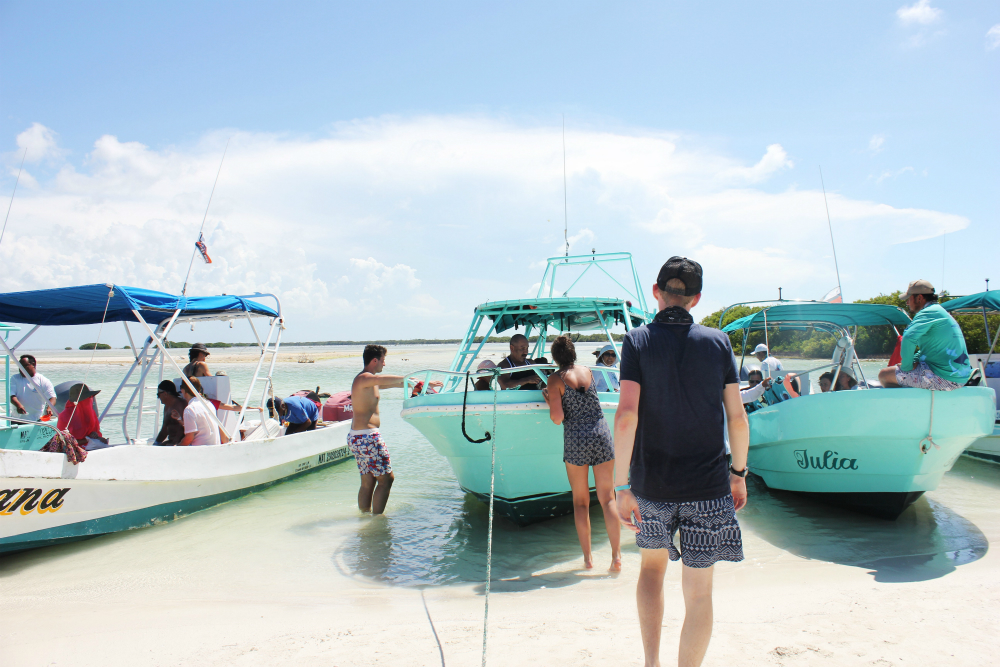
My Experience Swimming with Whale Sharks
I fastened my snorkel and looked down at the huge, shadowy shapes below. I couldn’t quite believe where I was and what I was about to do. “AQUA!” shouted our boat Captain – by which he meant “jump!” I hesitated momentarily and then plunged into the water as carefully as I could.
Once the bubbles cleared, I immediately found myself head-on with a huge whale shark, it’s mouth wide open as it was feeding on krill. I’m not going to lie, I had a fleeting panic at the intimidatingly huge whale shark coming right towards me. I pushed backwards with my flippers and our guide caught my arm and turned my head back towards the whale shark.
“Look at the whale shark!” he shouted to me. “I see it!” I screamed back. In a flurry, I moved out of the whale sharks way, still gripping onto the guide’s arm. I watched the whale shark’s long body curve to the side as it continued feeding. It’s wide mouth, it’s long body covered in grey fingerprint size spots and its strong tail was incredible to look at as it moved through the water.

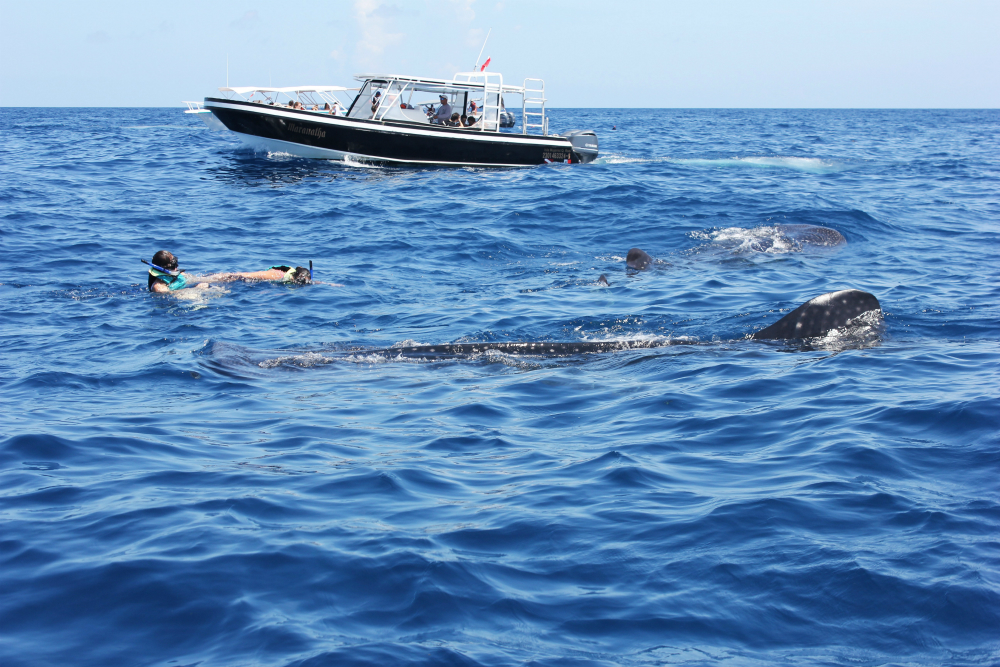
I felt like I’d been staring at the whale shark for a life-time but in reality it must’ve been only around 30 seconds. The guides told us that whale sharks swim so fast that snorkelers struggle to keep up with them, so I was lucky to get such a long look at one.
I pulled myself back on the boat feeling elated, overwhelmed and exhausted. The waters were teeming with whale sharks, so I watched them from above until Luke threw himself back on to the boat just as exhausted.
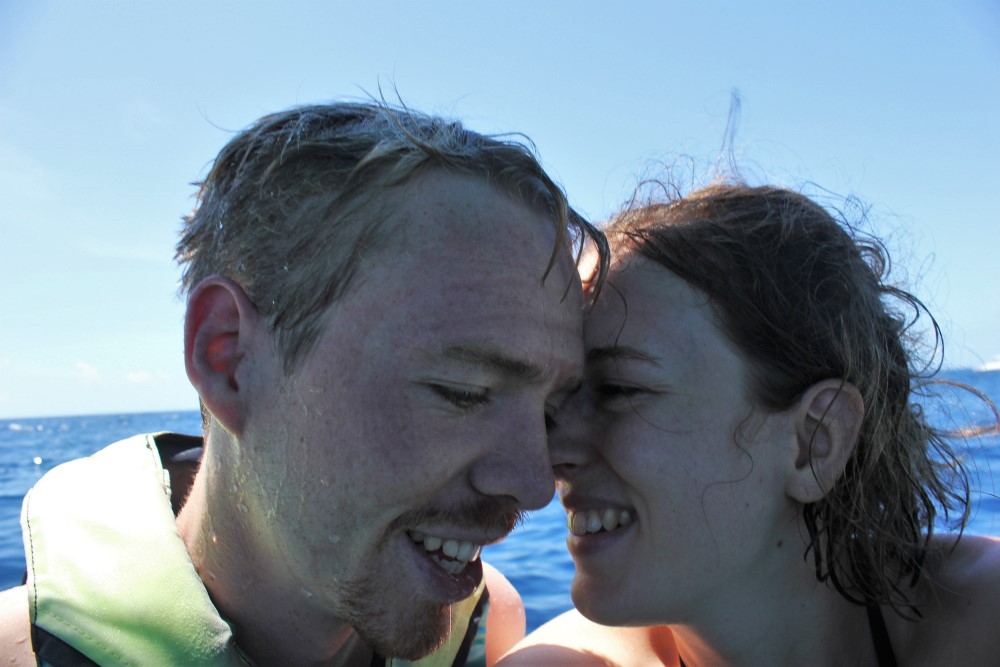
Swimming with Whale Sharks the Sustainable Way
After having an extremely bad experience dolphin watching in Bocas del Toro a few years ago, I was really, really worried about what whale shark tours would be like. I only wanted to swim with whale sharks if it could be done in a sustainable way.
I scoured the internet looking for information on sustainable whale shark tours in Isla Holbox but found it difficult to glean any real information about tour companies that were particularly sustainable or to know whether the few who claimed they were really would be.
The differences between swimming with whale sharks in Mexico and in the Philippines – two hot spots for whale sharks – was striking though. There is some shockingly unsustainable whale shark tourism in the Philippines, which includes the baiting of whale sharks and even allowing tourists to climb on their backs.
In Mexico, swimming with whale sharks is very different from this. Mexico has the largest natural aggregation of whale sharks in the world and tour operators don’t feed or bait the whale sharks. There are regulations for swimming with whale sharks in Mexico in place that tour operators should abide by. You can read those on the WWF website.
Swimming with whale sharks in Mexico isn’t perfect though and you’d be hard-pressed to classify it as eco-tourism. Even though whale shark tourism in Mexico is regulated, tourists are given very little information about sustainable whale shark tourism or whale shark conservation. There were also quite a large number of tour boats circling the whale shark area at the same time as the boats from Isla Holbox and Isla Mujeres congregate at the same place at a very similar time of day.
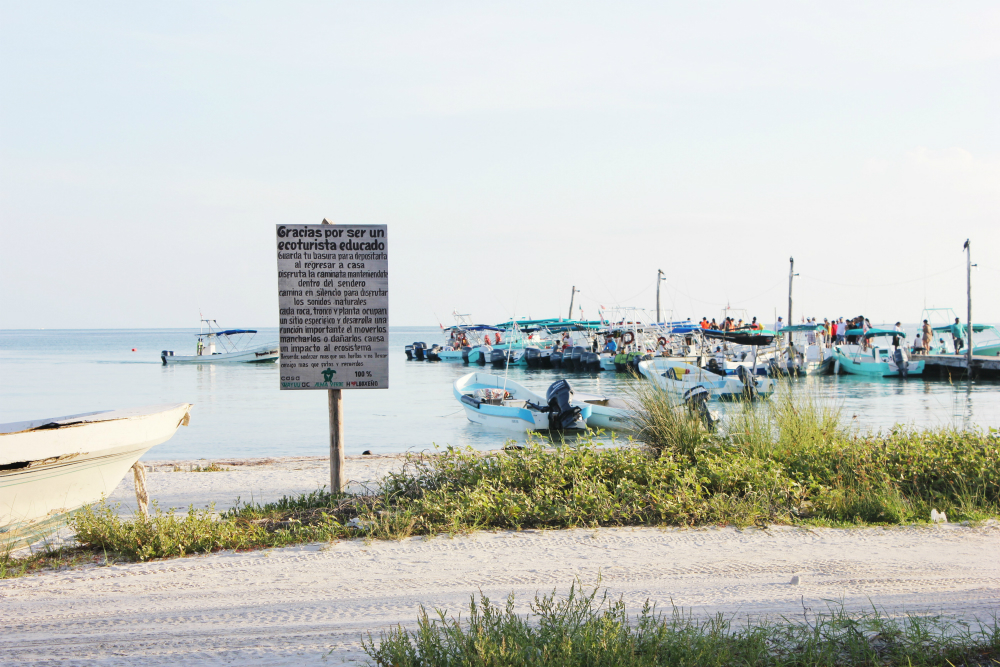
How to Swim with Whale Sharks Responsibly
Whale shark tourism does pose a threat to the whale sharks. Whale shark tourism can interrupt their feeding and tour operators need to be aware of proximity to whale sharks as well. We are the ones entering into their habitat and it’s important that we take steps to minimise any disturbance.
-
Don’t touch the whale sharks
Our whale shark tour guides actually did brief everyone about the importance of not touching the whale sharks and keeping a good distance from them. Whale shark tours visit areas where whale sharks are currently feeding. Whale sharks need to eat for a whopping 7.5 hours per day and it’s important to refrain from touching whale sharks because you risk disturbing their feeding.
I had thought refraining from touching or trying to ride whale sharks was a bit if a given, but one American guy on our boat immediately remarked: “What, we can’t touch them!? What’s the point of going to see them then?” It just goes to show that tour operators do need to highlight to highlight how best to appreciate whale sharks in their natural habitat to some tourists.
-
Keep a distance of 5 metres from the whale sharks
Snorkelers should give whale sharks a wide berth of at least 5m when in the water. Not only does this minimise the disturbance to the whale sharks and respect their habitat, but it also makes things safer for you.
Whale sharks are the world’s largest fish. They weigh 20.6 tonnes on average and can be up to 40 feet in length. Whale shark tails can whip up unpredictably and their mouth has a very strong suction. If you accidentally get in their way, then you would definitely be the one who gets hurt. Stay a safe distance away.
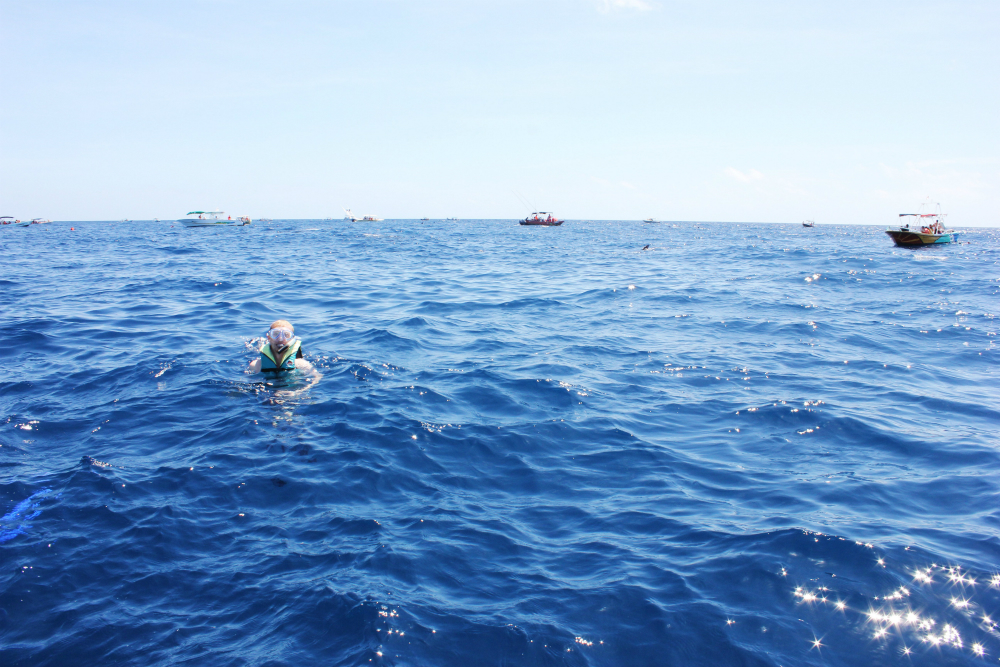
-
Keep your guide in sight
In Mexico, by law snorkelers are only able to swim with whale sharks along with a licensed guide. Whale shark tour guides are there to make sure you get the best possible sighting of a whale shark, but also to ensure you’re abiding by the regulations and being respectful of the whale sharks.
There were eleven people on our boat and we were split into groups of four to take turns swimming with the whale sharks. However, on a sustainable whale shark tour, only two snorkelers should go into the water at a time to further minimise disturbance to the whale sharks.
-
Don’t use flash on your camera
As with all wildlife tourism, you should not use flash photography. Remember to turn off your camera flash because this can disturb and sometimes scare wildlife. Many people in our group had underwater cameras to film the whale sharks, but we just took photos from on the boat.
-
Don’t wear suntan lotion
You shouldn’t wear sunscreen or any other lotions or oils before swimming with whale sharks unless it is 100% biodegradable sunscreen. Researchers say that environmental contaminants may block the fine filters which whale sharks have for feeding, and the chemicals in sunscreen may be hazardous to them.
Unfortunately, our group were slathering suntan lotion all over without a word from our tour guide. We didn’t wear any sunscreen at all and instead brought along long-sleeved t-shirts to avoid getting burnt on the 2-hour boat trip to the whale shark area. It’s the responsibility of both the whale shark tour operators to inform tourists not to wear sunscreen and for the tourists to know the regulations about this.
Other Advice for Swimming with Whale Sharks in Isla Holbox
-
Bring nausea tablets
To swim with whale sharks in Isla Holbox, you need to take a 2-hour boat journey from the island. It’s a bumpy ride, although apparently the waves are even rougher if you come from Isla Mujeres. Luke and I had heard about the seriously high amount of sickness occurring on the boat rides to see the whale sharks and brought along some nausea tablets.
When the boat started out we felt fine and decided not to take them. After about 20 minutes the boat ride started to get really bouncy and we were feeling a bit queasy. We took the tablets immediately and were fine for the rest of the day. But, out of the eleven people on our boat, four threw up during the journey and one woman was so sea-sick that she wasn’t able to participate in the whale shark swimming at all.
You can buy unbranded nausea tablets cheaply in Mexican pharmacies.
-
Only eat a light breakfast
It’s best only to eat a light breakfast before swimming with whale sharks in Isla Holbox. Not only can a heavy breakfast increase your chances of feeling sick on the boat ride, but it can also make the actual experience of swimming with the whale sharks uncomfortable. Whale sharks swim really fast so you need to swim hard to keep up with them. You don’t want your Mexican breakfast weighing you down.
-
Bring a snack for afterwards
You’ll definitely work up an appetite from swimming with whale sharks in Isla Holbox. Most of the boat tours provide fresh ceviche and if you’re vegetarian like us then you might get a piece of fruit or some guacamole if you’re lucky. However, lunch isn’t until later on in the afternoon at around 3pm, so it’s a good idea to bring some snacks along as well.
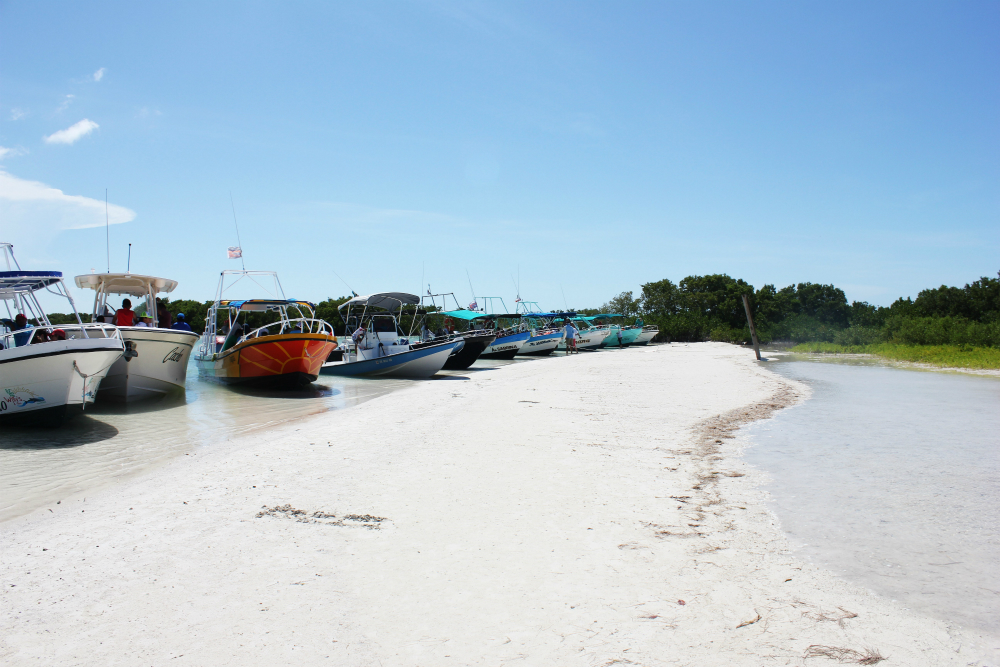
How to Book a Whale Shark Tour in Isla Holbox
You can book a whale shark tour to swim with whale sharks in Isla Holbox when you arrive. During whale shark season, whale shark tours leave every morning. This means that there’s no need to book more than one day in advance.
There are many whale shark tour operators in Isla Holbox, but we found it difficult to differentiate which would be the most sustainable whale shark tours. You should check that your whale shark tour operator is authorised by SEMARNAT.
We booked our whale shark tour through Tribu Hostel. Our whale shark tour guides briefed everyone about the importance of not touching the whale sharks and keeping a good distance from them, but otherwise failed to outline any of the other regulations. Tribu Hostel also failed to provide us with any information on sustainable whale shark tourism.
How Much Does It Cost to Swim with Whale Sharks on Isla Holbox?
Whale shark tours are priced at $70 per person (1300 Mexican pesos), and the price is generally the same amongst tour operators.
When is Whale Shark Season in Mexico?
Whale sharks arrive in Mexico’s Yucatan Peninsula between May – September. The highest numbers of whale sharks can usually be seen during July. You can organise a whale shark tour from either Isla Mujeres or Isla Holbox. Both islands are located near to Cancun.
If you plan to swim with whale sharks in Isla Holbox or Isla Mujeres in Mexico, be sure to follow the recommended regulations for responsible whale shark tourism and look for responsible whale shark tour operators.
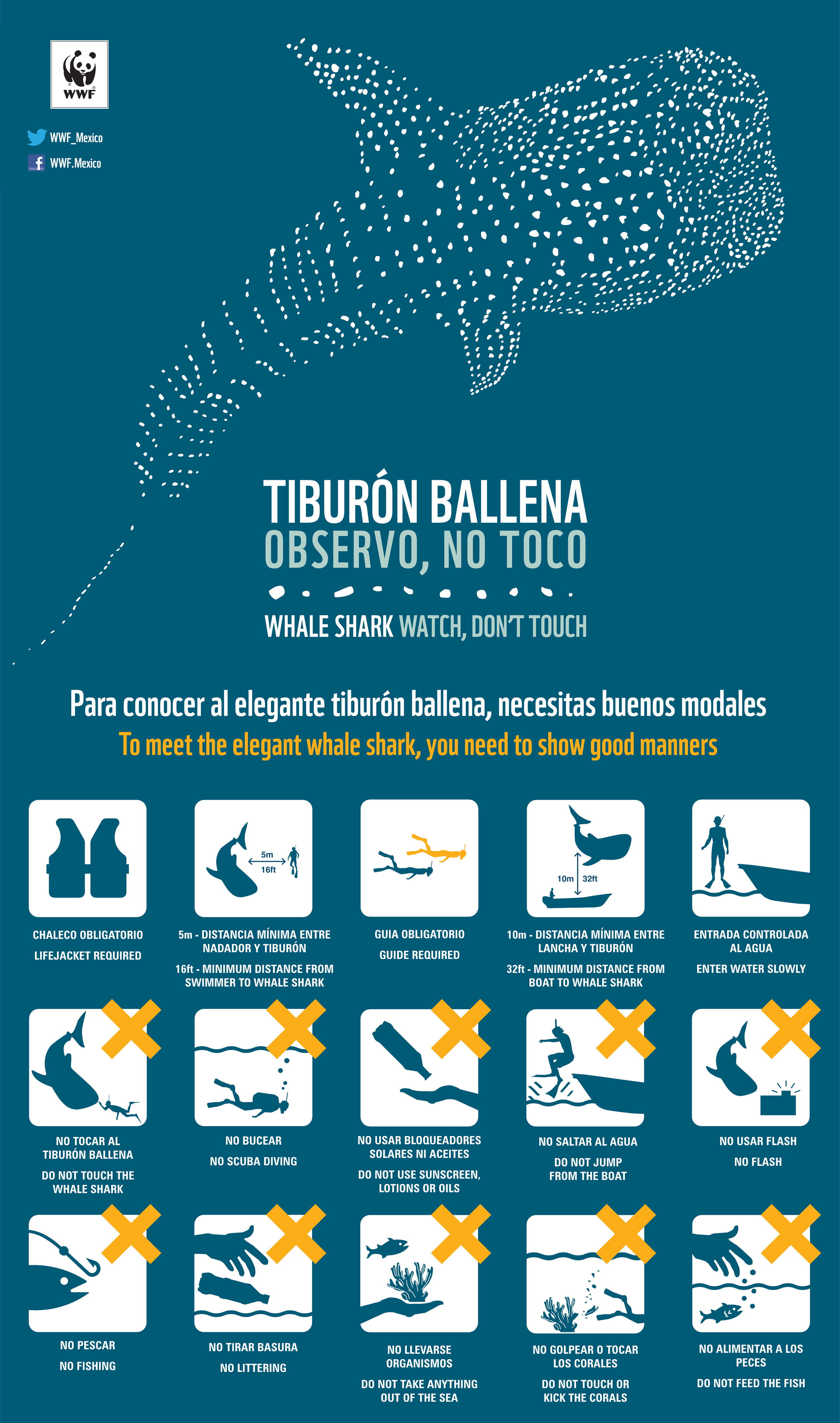

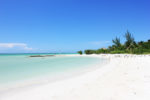



Wendy@TheNomadicVegan
Hi Charlie,
Thanks for sharing your experience; I can completely relate to your exhilaration. I swam with a whale shark in the Philippines a few years ago, and it’s something I will never forget. I don’t believe there was any baiting going on on our boat, and I didn’t see anyone trying to ride (!) the whale sharks.
We were actually given a pretty thorough briefing and were told to stay a certain distance away from them, but that didn’t seem to be enforced in practice once we got into the water. Thank you for highlighting the importance of disturbing the whale sharks as little as possible.
Charlie on Travel
Hi Wendy,
Glad to hear that you had a positive experience swimming with whale sharks in the Philippines. It’s really great to hear that you didn’t experience any baiting during your trip and that you had a thorough briefing. I think it would’ve been really beneficial to have had a proper briefing in Mexico before we got in the water. We were told about keeping our distance and not touching the whale sharks but the distance was quite hard to judge in the water. Fortunately I didn’t see anyone trying to touch a whale shark though.
Hopefully people will become more aware of the regulations in place and read/research before they take a trip. I also hope that tour operators will begin to see that there is a demand for responsible whale shark tourism.
Jennysnorkeler
Any tips for how to eat vegan on Isla Holbox or a night in Cancun?
Nicholas
It’s a good article, Charlie. If you’re interested, another place you might want to compare Mexico and the Philippines with is Australia. Whale sharks appear near Ningaloo Reef seasonally and it’s the next nearest option to me.
Jhon jaka
Nice trip
Linda J McCormick
Great post, Charlie! Although I’ve been in the water quite a few times with bog standard sharks, I still haven’t had the chance to swim with the elusive whale shark. And I’ve always questioned tours that take you swimming with whale sharks. Seeing them by chance while diving was always my goal. However, this company appear really on the ball in sustainable terms.
Must have been amazing!
Charlie on Travel
Thanks, Linda. I think you have to question all wildlife tours because it’s really so difficult to tell exactly what the tour will be like or whether it really is sustainable. I wouldn’t say that the company I went with was on the ball from a sustainable standpoint at all (really the opposite). However, I do think that Mexico have put into place a good number of regulations and have a reasonable amount of control over the situation and tours. Of course, happening across whale sharks in the wild while diving would always be the dream!
Chris
Thank you so much for all your help Charlie hope to meet up soon , with you
From Chris in Croxley Green